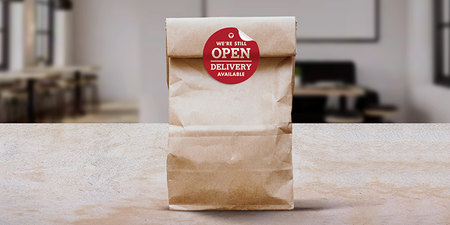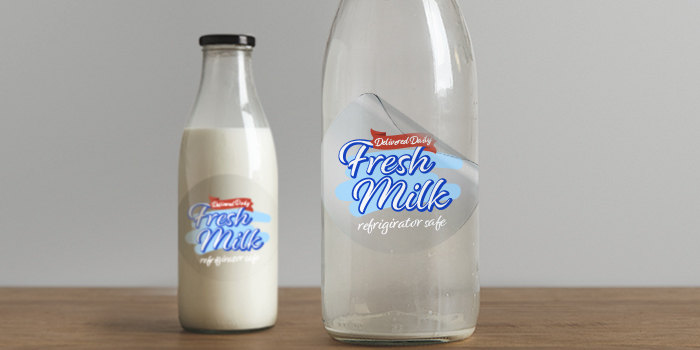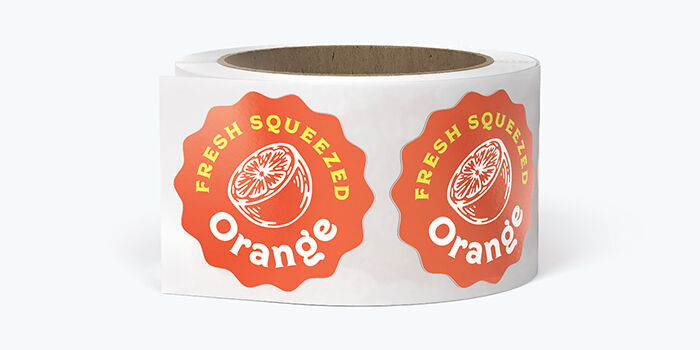The Ultimate Guide to Different Types of Stickers

Who doesn’t love stickers? Whether you’re handing them out to children, teenagers, college students, or full-time professionals, the chances of you getting rejected are slim to none. That’s why stickers remain one of the bestselling print products to date—they have cemented their role as a marketing essential.
Not all stickers are the same, though. Each sticker material sports distinct qualities that make it suitable for a specific purpose or attractive to a target market.
Take athletes as an example. If you are an athletic brand giving away stickers to sports clinic attendees, you will most likely go with waterproof materials to encourage recipients to stick them on their water bottles. However, if you own an arts and crafts business and would like to personalize your packaging, you will probably opt for stickers that can be written on with a pen or marker.
If you plan to order custom stickers but are at a loss for which material or format would best suit your needs, you have come to the right place! Read on for our detailed guide on different sticker types.
The Psychology Behind Stickers
Before diving deep into sticker technicalities, let us first understand why stickers are popular and well-received.
Stickers allow us to express ourselves. Gone are the days when phones flip, slide, and come in crazy shapes and colors. We bet you have picked up a phone or tumbler that’s not yours because it’s hard to tell them all apart. Stickers prevent this from happening, but they also let the owner’s personality and character shine through their possessions.
Stickers memorialize milestones. You can take photos and videos to commemorate a special event, but wouldn’t it be nice to receive a souvenir sticker to remember the good times?
Stickers foster a sense of community. When stickers are used to promote a movement, message, or political affiliation, the recipient is bound to feel a sense of belonging. This positive emotion heightens when other people acknowledge and express their shared interests.
The Most Common Sticker Materials
Not all glossy stickers are made from the same paper. A label that doesn’t peel in the freezer may disintegrate once you submerge the product in water. Here, we discuss sticker materials you often encounter and where they are best used.
Paper Sticker
Best for: Trying out stickers or labeling dry products, packaging labels, and bulk orders on a tight budget

Paper sticker is the most affordable option offered by printing companies. The stickers come in three different finishes—matte, gloss, and high-gloss. It’s not waterproof, but it can be written on with a pen or permanent marker.
Textured Paper Sticker
Best for: Labeling wine and beverage bottles
This option lends a rustic vibe to any item or product. Textured paper stickers are not flimsy to the touch since they’re made of a thicker material. Its surface can be written on with a pen or permanent marker. Once a UV coating is added, it becomes scratch- and moisture-resistant.
Vinyl Stickers
Best for: Labeling outdoor equipment, cars and bicycles, and sports gear such as helmets and surfboards
Vinyl is the thickest and most durable sticker material. With proper care, it can last up to a decade, even with constant exposure to UV rays. Vinyl stickers can withstand wear and tear and are chemical- and water-resistant. Vinyl is smooth to the touch and flexible enough to adhere to any dry surface, but it can’t be written on with a pen or marker.
BOPP Stickers
Best for: Labelling food, beverages, and pantry essentials, as well as bath and body products

BOPP, or biaxially oriented polypropylene, is a non-toxic plastic touted as an affordable alternative to vinyl since it’s thinner and less rigid. Although BOPP is not suggested for outdoor use, its oil- and water-resistant properties make it perfect for food and bath products. BOPP has three varieties—white, clear, and silver BOPP. Clear BOPP is ideal for the no-label look, while silver BOPP makes colors appear metallic.
Different Sticker Formats
After deciding on the material, the next step is to choose if you want to print your stickers individually, on a roll, or on a sheet.
Cut-to-size (Die-cut)

Cut-to-size or die-cut stickers involve individually cutting them with a laser, down to the outline of the design. This format is best for small orders and if the intent is to give away the stickers to customers or eventgoers. This is also the most affordable option.
Kiss-cut

Kiss-cut stickers are also individually cut and delivered in stacks like die-cut stickers. The difference is the backing remains untouched, making it the best option for designs with complex shapes. Some printing companies accommodate printing jobs for the backing by including brand names or contact details.
Sheet

Sticker sheets or pages are the best choice for customers planning to order stickers in bulk but don’t have a label dispenser to make application faster. This format is also the easiest to store and organize, and you can put multiple designs in a single spread!
Roll

This format is best for large orders where the stickers don’t have to be applied by hand. The minimum quantity is 250 stickers. Roll stickers are printed on a continuous sheet wound around a compact cardboard core that fits most label dispensers.
Now that you’re equipped with sticker know-how, choosing the sticker type that best suits your needs is no longer tedious. If you still have questions about custom stickers, don’t hesitate to reach out! PrintRunner’s team of sticker professionals is more than happy to assist.



